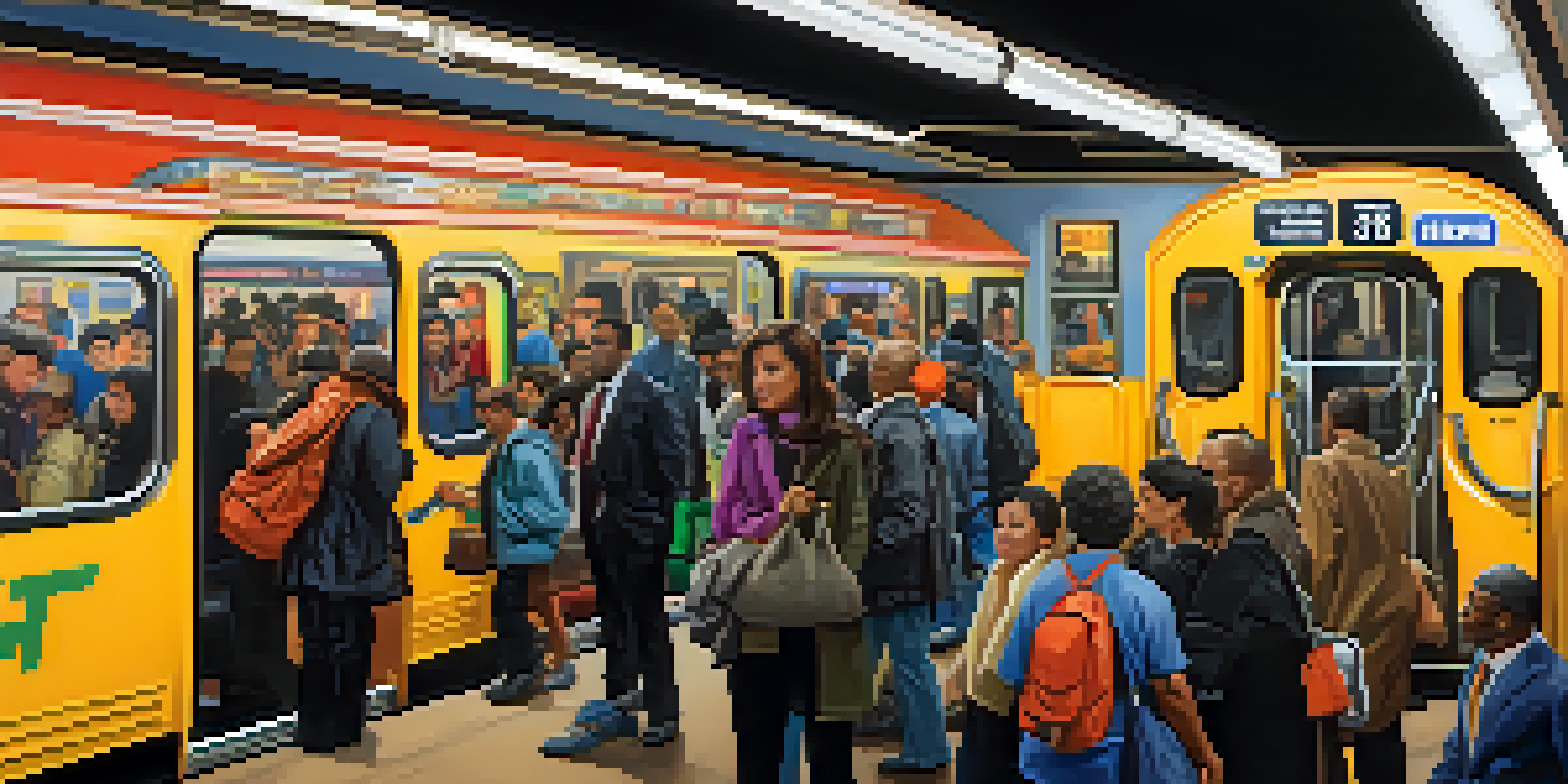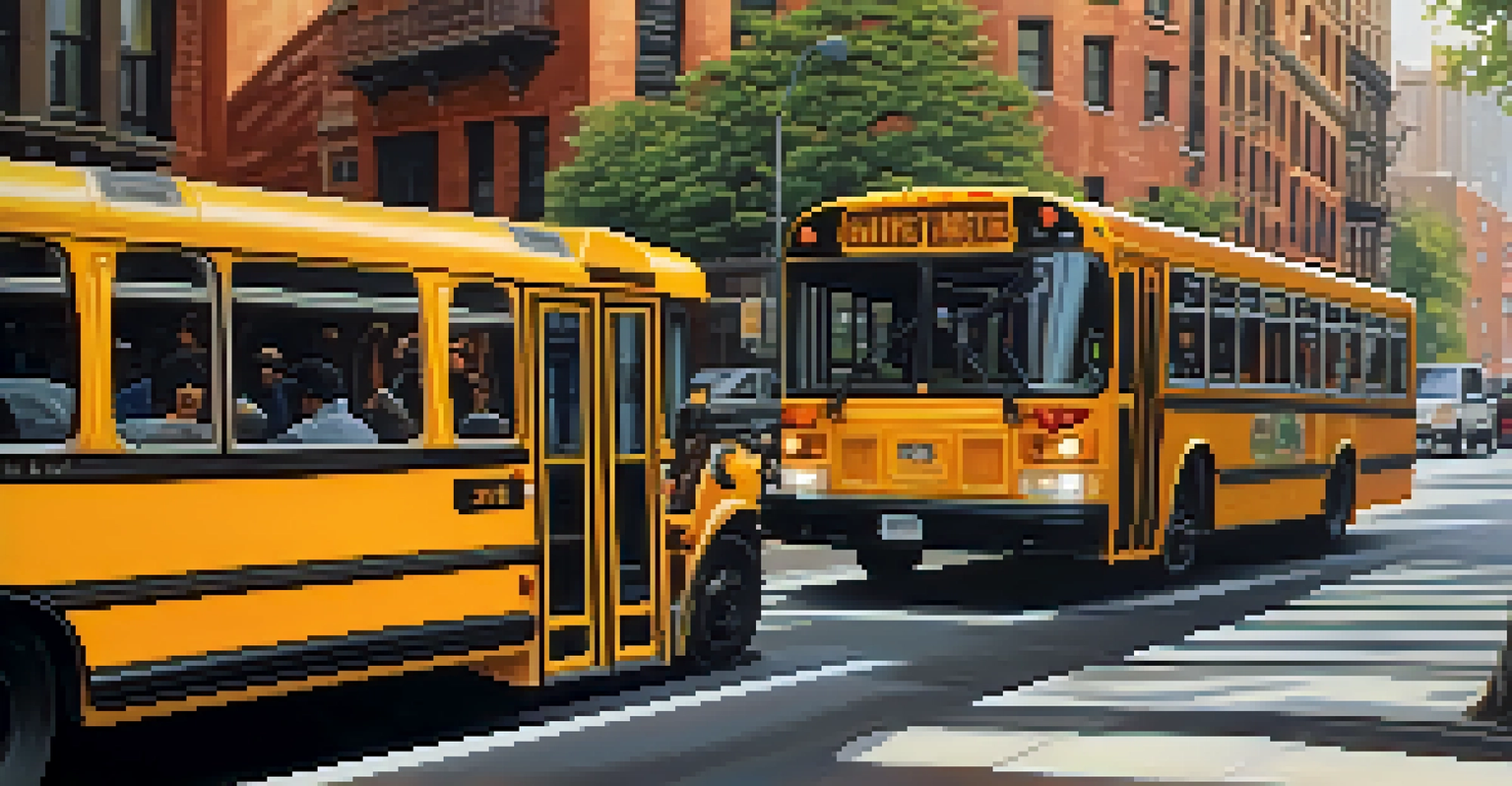Commuting in New York: Buses, Subways, and Rail Systems

Overview of New York's Transportation Landscape
Commuting in New York City can feel like a daunting task, but understanding its transportation options makes it manageable. With a robust network of buses, subways, and rail systems, the city offers various ways to navigate its bustling streets. Each mode of transportation has its unique features, catering to different needs and preferences.
The journey is the destination.
The Metropolitan Transportation Authority (MTA) oversees the majority of these transit options, ensuring that New Yorkers and visitors can get from point A to point B efficiently. Whether you’re heading to work, school, or exploring the city, there's a good chance you’ll find yourself relying on one of these systems. Commuting can be an adventure in itself, full of interesting sights and experiences along the way.
In the following sections, we’ll dive deeper into the specifics of each transportation mode, helping you understand how to utilize them effectively. From the iconic subway to the extensive bus routes, there’s a lot to explore in the world of New York commuting.
The Subway: New York's Underground Lifeline
The New York City subway is a lifeline for millions, operating 24 hours a day, seven days a week. With over 470 stations and 25 routes, it’s one of the largest and most complex subway systems in the world. This vast network allows commuters to travel quickly between boroughs, making it the go-to option for many New Yorkers.

Riding the subway can be an adventure, filled with the hustle and bustle of daily life. You might find yourself sharing a car with musicians, artists, or fellow commuters engrossed in their books. While it can be crowded during peak hours, the subway remains one of the fastest ways to navigate the city, especially for longer distances.
Diverse Transit Options Available
New York City offers a variety of transportation modes, including subways, buses, and rail systems, catering to different commuting needs.
However, it's important to familiarize yourself with the subway map and schedule, as service changes can occur due to maintenance or delays. Armed with a MetroCard and a little patience, you'll be zipping through the city in no time, taking in the vibrant atmosphere of urban life.
Exploring the Bus System: A Surface-Level Perspective
While the subway takes you underground, the bus system provides an above-ground alternative, offering unique views of the city. With over 300 routes, buses are a great option for those traveling short distances or heading to areas not serviced by the subway. They also provide a more scenic route, allowing you to see neighborhoods up close.
Life is a journey, not a destination.
Buses can be especially useful for getting to destinations that are a bit off the beaten path, making them an essential part of New York's transit ecosystem. Plus, they are equipped with accessibility features to accommodate all riders. However, be prepared for potential delays due to traffic, particularly during rush hours.
To make the most of the bus system, familiarize yourself with the MTA bus map and consider using transit apps for real-time updates. With a little planning, you can seamlessly integrate bus rides into your daily commute, exploring the city’s rich tapestry as you travel.
The Accessibility of Commuting in New York
New York’s transportation system strives to be accessible to everyone, but there are challenges. While many subway stations and buses have been updated to accommodate riders with disabilities, not all locations are fully accessible. Understanding which stations and routes are equipped with elevators and ramps can significantly enhance the commuting experience for those with mobility issues.
The MTA has made strides in improving accessibility, including adding more accessible subway stations and providing services like Access-A-Ride for those who qualify. However, it’s essential to plan ahead and check accessibility features on the MTA website before embarking on your journey. This foresight can help avoid any potential frustrations.
Accessibility Improvements Made
While the MTA has enhanced accessibility features in many transit options, it's crucial for riders to plan ahead to ensure a smooth experience.
For those who rely on these services, being informed and proactive is key. By understanding the available resources, you can navigate the city’s public transport system with greater ease and confidence.
Peak Hours: Navigating the Rush
If you’ve ever been on the subway or a bus during rush hour, you know it can be quite the experience. Peak hours, typically from 7-9 AM and 5-7 PM, see an influx of commuters, making for crowded trains and buses. This high volume often leads to delays and a more frantic pace, so it’s wise to plan accordingly.
To navigate peak hours successfully, consider traveling during off-peak times if your schedule allows. Not only will you enjoy a more comfortable ride, but you’ll also have a better chance of securing a seat. If you must commute during rush hours, try to add a little extra time to your commute to account for potential delays.
Additionally, staying updated on service changes or disruptions via the MTA’s website or transportation apps can save you from unexpected headaches. With a little preparation, you can tackle rush hour like a pro.
Rail Systems: Connecting New York to Surrounding Areas
Beyond buses and subways, New York's rail systems extend the reach of public transportation, connecting the city to surrounding areas. The Long Island Rail Road (LIRR) and Metro-North Railroad serve commuters traveling from the suburbs into Manhattan. These train services are a vital link for those who live outside the city yet work in it.
Traveling by rail can offer a more relaxed commuting experience compared to the hustle of the city’s buses and subways. With comfortable seating and the ability to avoid street traffic, many commuters find the train a pleasant alternative, especially during longer journeys. Plus, many stations feature amenities like shops and waiting areas to enhance your travel experience.
Navigating Rush Hour Effectively
Commuters can avoid the chaos of peak hours by traveling during off-peak times and staying informed about service updates.
It’s important to check schedules and fare information ahead of time, as they can vary significantly from subway and bus services. By planning your trip well, you can enjoy the scenic views along the way and arrive at your destination refreshed and ready for the day.
Safety Tips for Commuting in New York
Safety is a top priority for commuters in New York, and being aware of your surroundings is crucial. Whether you’re on the subway, bus, or rail, always keep an eye on your belongings and be cautious of your surroundings. This simple awareness can help prevent theft and ensure a more enjoyable commute.
Additionally, it's wise to avoid empty subway cars late at night and to stay near other passengers when waiting for a bus or train. The MTA has made significant efforts to enhance safety, including increased surveillance and emergency communication systems, but personal vigilance remains essential.

Before heading out, check for safety updates or advisories from the MTA. With a little caution and preparation, you can navigate New York's transport systems confidently and securely.
Final Thoughts on Commuting in New York
Commuting in New York may seem overwhelming at first, but with some knowledge and preparation, it becomes a manageable part of daily life. Each transportation option, from buses to subways to rail systems, offers unique advantages that cater to the diverse needs of its users. Embracing the city’s transit culture can enrich your experience and provide insights into the vibrant life that pulses through New York.
As you explore these commuting choices, remember that every trip is an opportunity to discover new sights and sounds. Whether you’re a native New Yorker or a visitor, the journey can be just as rewarding as the destination itself. Engaging with fellow commuters and sharing stories can turn a mundane trip into a memorable experience.
So, grab your MetroCard, check the schedule, and dive into the world of New York's commuting. With every ride, you’re not just traveling; you’re becoming part of the city’s dynamic narrative.